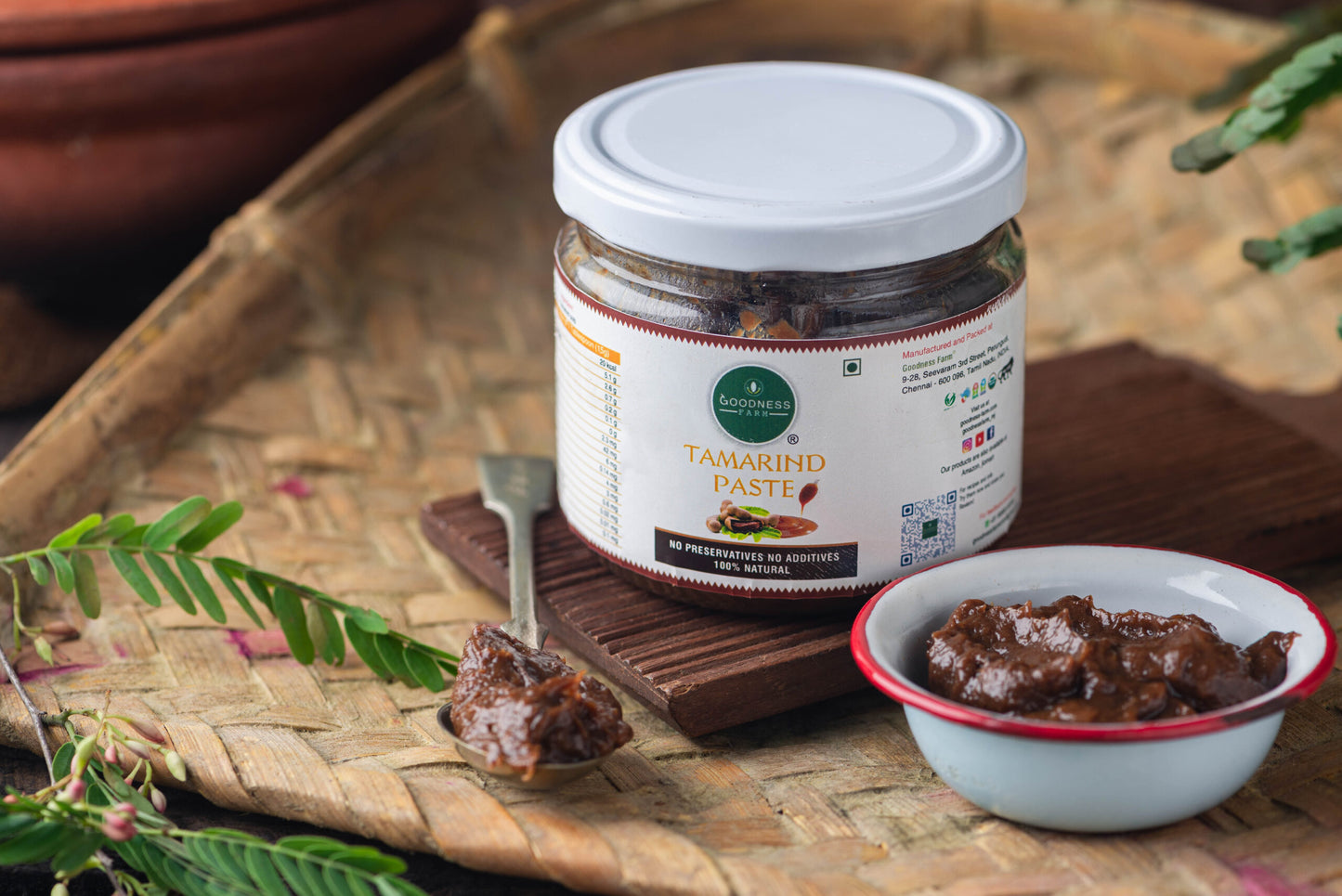1
/
of
1
Goodnessfarm
Tamarind Paste, Organic (300 G)
Tamarind Paste, Organic (300 G)
Regular price
Rs. 350.00
Regular price
Sale price
Rs. 350.00
Taxes included.
Shipping calculated at checkout.
Quantity
85 in stock
Couldn't load pickup availability
Organic, preservative-free tamarind paste is a natural and wholesome product made from the pulp of tamarind fruit.
Production Process
The production of organic, preservative-free tamarind paste involves several steps to ensure the purity and quality of the final product:
1. Harvesting: Organic Tamarind pods are harvested when they are ripe during the summer.
2. De-shelling and De-seeding: The tamarind pods are de-shelled, and the sticky pulp is separated from the seeds and fibrous material. This step is labor-intensive and requires careful handling to preserve the quality of the pulp.
3. Pulp Extraction: The tamarind pulp is soaked in warm water to soften it, making it easier to extract the paste. The softened pulp is then strained to remove any remaining seeds and fibers.
4. Blending: The extracted pulp is blended into a smooth paste. For a preservative-free product, no artificial preservatives, additives, or flavor enhancers are used. The paste may be gently heated to ensure a longer shelf life while retaining its natural properties.
5. Packaging: The tamarind paste is packaged in airtight containers to preserve its freshness and prevent contamination.
Benefits
- Nutrient-Rich: Tamarind paste is rich in vitamins and minerals, including vitamin C, vitamin B, potassium, magnesium, and iron. It also contains antioxidants that help fight free radicals in the body.
- Digestive Health: Tamarind has natural laxative properties and is often used to aid digestion and relieve constipation.
- Natural Preservative: The acidic nature of tamarind helps preserve food naturally, reducing the need for artificial preservatives.
Usage
Organic, preservative-free tamarind paste is highly versatile and can be used in a variety of culinary applications:
- Condiments and Sauces: Tamarind paste is a key ingredient in many sauces, chutneys, and marinades. It adds a tangy flavor to dishes such as pad thai, tamarind chutney, and barbecue sauces.
- Curries and Stew*: The paste is often used in Indian, Thai, and African cuisines to add depth and a unique sourness to curries like sambar, fish curries and stews.
- Beverages: Tamarind paste can be used to make refreshing beverages like tamarind juice and tamarind agua fresca.
- Meat Tenderizer: The natural acids in tamarind can help tenderize meat, making it an excellent marinade component for tough cuts of meat.
Storage
To maintain the quality of organic, preservative-free tamarind paste, it should be stored in a cool, dry place, away from direct sunlight. Once opened, it is best kept refrigerated to extend its shelf life. The absence of preservatives means it may have a shorter shelf life compared to commercial tamarind pastes with additives, but the natural flavor and health benefits make it a preferred choice for health-conscious consumers.
Organic, preservative-free tamarind paste embodies the essence of natural, wholesome cooking, bringing an authentic and nutritious touch to a wide range of dishes.
Share


